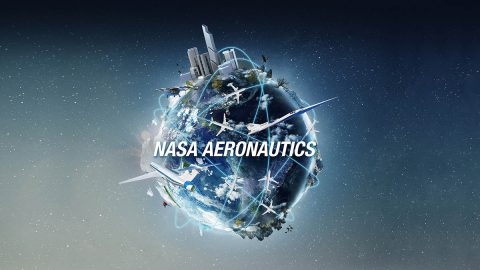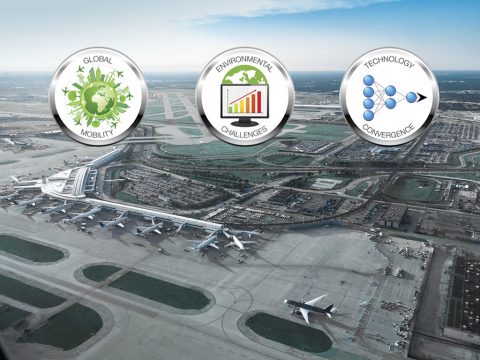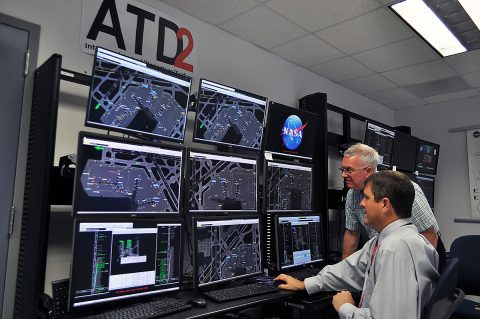 Washington, D.C. – NASA says the future of aviation doesn’t look the same as it did just five years ago. In fact, it looks more exciting and promising than ever before.
Washington, D.C. – NASA says the future of aviation doesn’t look the same as it did just five years ago. In fact, it looks more exciting and promising than ever before.
During that time companies not usually associated with the aviation community have entered the market, demand for new services by air has grown, and technologies have advanced to enable turning long-sought dreams into reality.

In order to keep pace with these changes and ensure the United States remains the world’s leader in aviation, NASA’s aeronautical innovators must periodically reassess the research they are doing and why that work is relevant to industry and beneficial for the flying public.
NASA’s strategic vision – developed in coordination and consultation with government, industry and academia – was first announced in 2013. From that the first Strategic Implementation Plan was published in 2015.
Based on new input from industry and others, the plan was updated in 2017. Today, NASA unveils the 2019 update of the plan, which describes how several research areas were changed to reflect recent trends.

“With this updated plan we are poised to help usher in a new era of aviation with innovations as transformative as those seen when the jet age in commercial air travel began more than a half-century ago,” said Robert Pearce, NASA’s associate administrator for aeronautics.
The 2019 issue of the Strategic Implementation Plan supports a vision for the future in which:
- A new commercial market for supersonic air travel is underway thanks to a regulatory change made possible by data generated from the X-59 Quiet SuperSonic Technology airplane, which is designed to fly faster than sound yet produce sonic booms no louder than a gentle thump.
- Innovative, sustainable subsonic aircraft with different shapes and built from lighter, advanced composite materials use dramatically less fuel and produce far fewer emissions.
- Aircraft of all sizes and types, especially those capable of vertical takeoffs and landings, rely on propulsion powered by electric motors turning propellers or large fans.
- Technologies and airspace management advancements make possible a safe, economically sustainable Urban Air Mobility (UAM) transportation system where semi- and fully autonomous vehicles provide many new services in and around cities large and small.
“Our plan is a living document,” Pearce said. “While we haven’t yet needed to change the global trends that informed our original 2013 vision, the broader community input we continue to receive prompts us to revisit and often revise the thinking that guides our research portfolio.”

For the 2019 update, NASA revised its six guiding principles or, as the plan calls them, “strategic thrusts.”
- Support the Federal Aviation Administration and work with others to modernize managing the nation’s airspace, improving safety and making operations more reliable and predictable. This research area is evolving to enable the new, diverse aviation business models that have come on the scene during the past few years, like UAM.
- Advance groundbreaking technologies and generate data that help overcome barriers to enabling a commercial supersonic transportation market capable of safely operating over land with as little environmental impact as possible.
- Explore out-of-the-box ideas for designing subsonic aircraft with exponentially greater environmental sustainability thanks to propulsion systems that deploy electricity in combination with alternative fuels. This research area is evolving to focus on the challenges of integrating new propulsion systems into an aircraft.
- Investigate advanced technologies related to vertical takeoff and landing aircraft in order to make them safer and quieter. This research area has evolved to respond to increasing demand for knowledge about how to design, build and fly these types of vehicles in a fully integrated and operational UAM transportation system.
- Design and test new operational capabilities in which aircraft of all sizes and types, including drones, are equipped with systems that can accurately predict or detect safety-related problems and prevent them before they happen.
- Develop systems to support ever-increasing demand for reliable automation and autonomy in aviation with a focus on intelligent machine systems that can safely handle complex situations, especially as they relate to UAM.
“We’re on the event horizon of a new era of aeronautical innovation where aircraft won’t look the same as they do today, they won’t be propelled the same way, and the world will continue to shrink as commercial supersonic flight over land becomes a reality,” Pearce said.

“As air travel seeks to reinvent itself in ways unimaginable even just half a decade ago, we’re confident this updated plan keeps us on the right path to make that future possible.”



